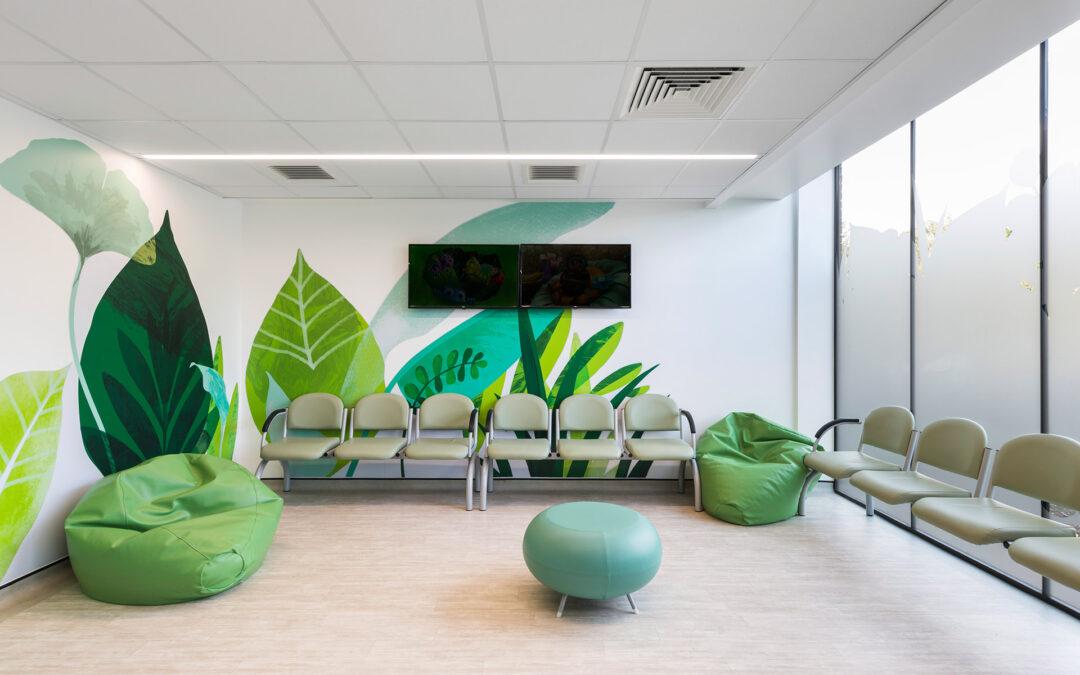The population aging rapidly, the role of an interior designer for hospital has become increasingly vital in crafting healthcare environments that address the distinctive needs of older adults. A well-designed space can profoundly enhance their experience, providing comfort, safety, and well-being during their stay in healthcare facilities. This blog delves into how interior design can support the aging population in healthcare settings.
The significance of an interior designer for hospital is paramount when it comes to creating spaces that cater to the elderly. The aging population has specific requirements, including mobility, accessibility, and a calming, nurturing ambiance. To meet these needs, interior designers must be aware of several essential considerations.
Effective Design Strategies to Minimize Fall Risks in Hospitals
Firstly, safety for older adults must be a top priority for designers. A prevalent issue among the elderly is the risk of falls, which can have dire repercussions on their health. To reduce this risk, an interior designer for hospital should employ strategies such as installing slip-resistant flooring, guaranteeing sufficient lighting, and placing handrails and grab bars in strategic locations.
Creating Ergonomic and Accessible Spaces for Older Adults
Besides safety, the physical comfort of the aging population should be taken into account. Ergonomics are crucial in ensuring a cozy experience for older adults, as many grapple with chronic pain, arthritis, or other musculoskeletal issues. Furniture selection is critical, with features like adjustable heights, cushioned seating, and proper lumbar support. The space’s layout should also enable easy movement, incorporating wide corridors and doorways to accommodate walkers, wheelchairs, and other mobility aids.
Read More: Optimizing Hospital Circulation: Interior Designer for Hospital Strategies
Designing Inviting and Familiar Spaces for Elderly Patients
Another essential aspect of designing for the aging population is fostering a sense of familiarity and comfort. An interior designer for hospital should aim to create spaces evoking a home-like atmosphere. This can be achieved by integrating elements of residential design, such as warm colors, gentle lighting, and cozy furnishings. Artwork and decorations can be utilized to establish a more welcoming environment.
Streamlining Wayfinding for Elderly Patients with Intuitive Design Solutions
Furthermore, wayfinding is a major concern for older adults, who may face confusion or disorientation due to memory challenges or cognitive decline. An interior designer for hospital must ensure the presence of clear and intuitive signage to guide patients and visitors. Visual cues, like contrasting colors or floor patterns, can be employed to distinguish spaces and offer additional guidance.
Read More: Signage and Wayfinding in Medical Facilities — Hospital Architectural Services Tips
Designing Communal Spaces to Encourage Social Interaction Among Elderly Patients
Social interaction is another vital factor to consider when designing spaces for the aging population. Loneliness and social isolation can negatively impact the mental health of older adults. As such, an interior designer for hospital should fashion communal spaces that foster interaction and cultivate a sense of community. These spaces may include shared dining areas, outdoor gardens, or inviting sitting areas for patients and their families to gather.
Additionally, integrating biophilic design elements can immensely benefit the elderly. Studies have demonstrated that access to natural elements, such as sunlight, plants, and water features, can considerably improve mood, alleviate stress, and promote healing. An interior designer for hospital should endeavor to incorporate these features into the design when feasible, either through outdoor spaces or by introducing nature indoors.
In conclusion, the primary objective of an interior designer for hospital is to construct an environment that nurtures well-being and caters to the unique needs of the aging population. By taking into account the factors discussed above, designers can shape spaces that offer a safe, comfortable, and caring experience for older adults in healthcare facilities. In doing so, we contribute to a more compassionate, patient-centered healthcare experience for this crucial segment of our population.

